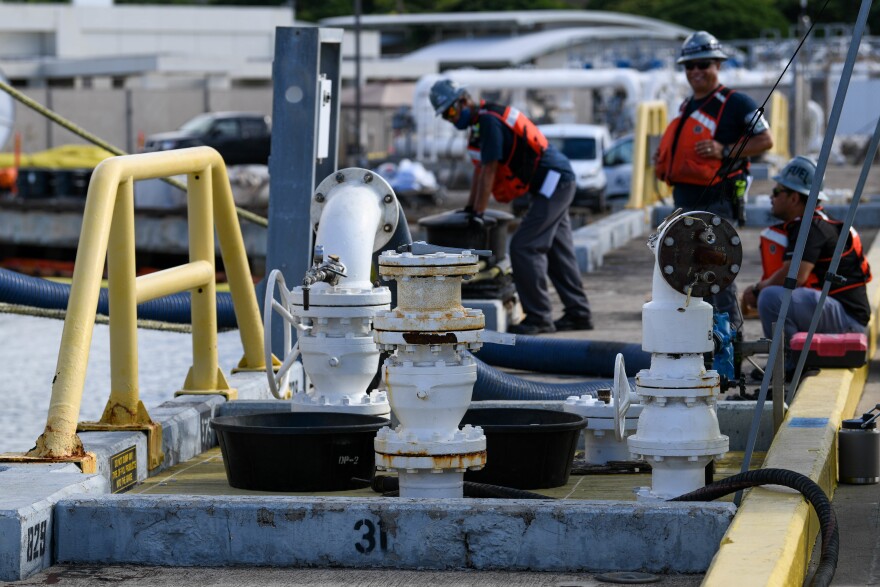More than 1 million gallons of fuel have been removed from the pipelines of the Red Hill fuel storage facility.
The U.S. Navy's Joint Task Force Red Hill team began "unpacking" on Oct. 25, through a process called gravity draining. The rest of the fuel was removed Thursday, Nov. 3 using vacuum pumps.
Three types of fuel — JP-5, F-24 and F-76 — had been sitting in three respective 2.5-mile pipelines since the Navy ceased operations at the facility last year.
The Navy said it removed 215,000 gallons of JP-5, 161,000 gallons of F-24, and 682,000 gallons of F-76 marine diesel fuel.
Recovered fuel has been moved to above-ground tanks on Joint Base Pearl Harbor-Hickam and oil barges at Hotel Pier for use. The Navy said the process was completed without any issues.
Representatives from the state Department of Health, U.S. Environmental Protection Agency and the U.S. Coast Guard monitored the procedure.
Unpacking was the first phase of defueling Red Hill before the Navy can begin repairs and eventually close the facility.
The Navy is closing the facility in response to an order from the state Department of Health after fuel spilled from the facility into a drinking water well in November.
It expects to finish draining fuel from the tanks in July 2024. The Navy said it will take another three years after they are drained to close the facility, setting a date in 2027.
The Navy said it would seek permission from the state Department of Health to leave the 20 tanks inside the hillside where they were built during World War II.
Meredith Berger, assistant secretary of the Navy for energy, installations and environment, told reporters at a news conference that it would be safer for the environment to leave the tanks in place once they are cleaned.





